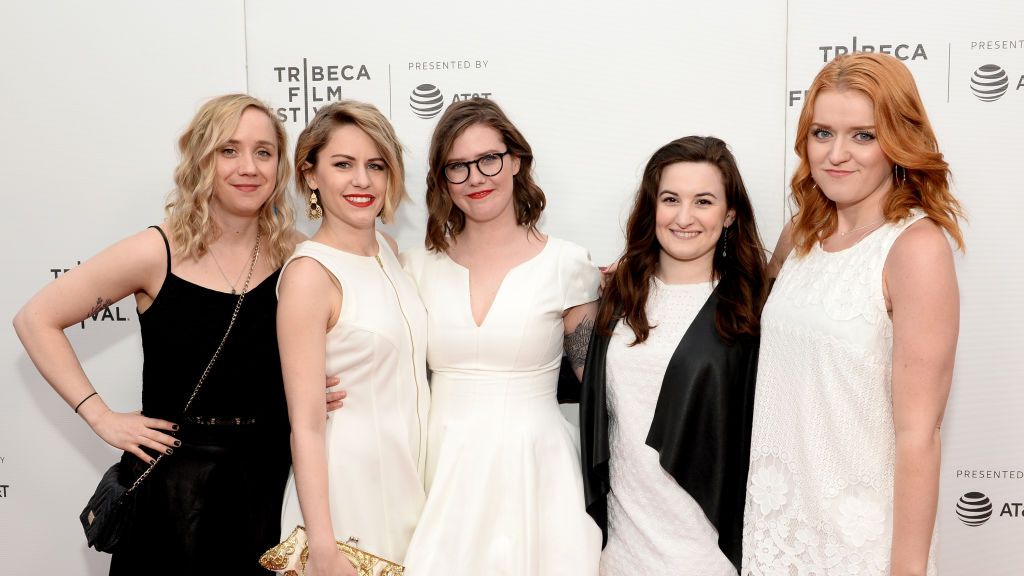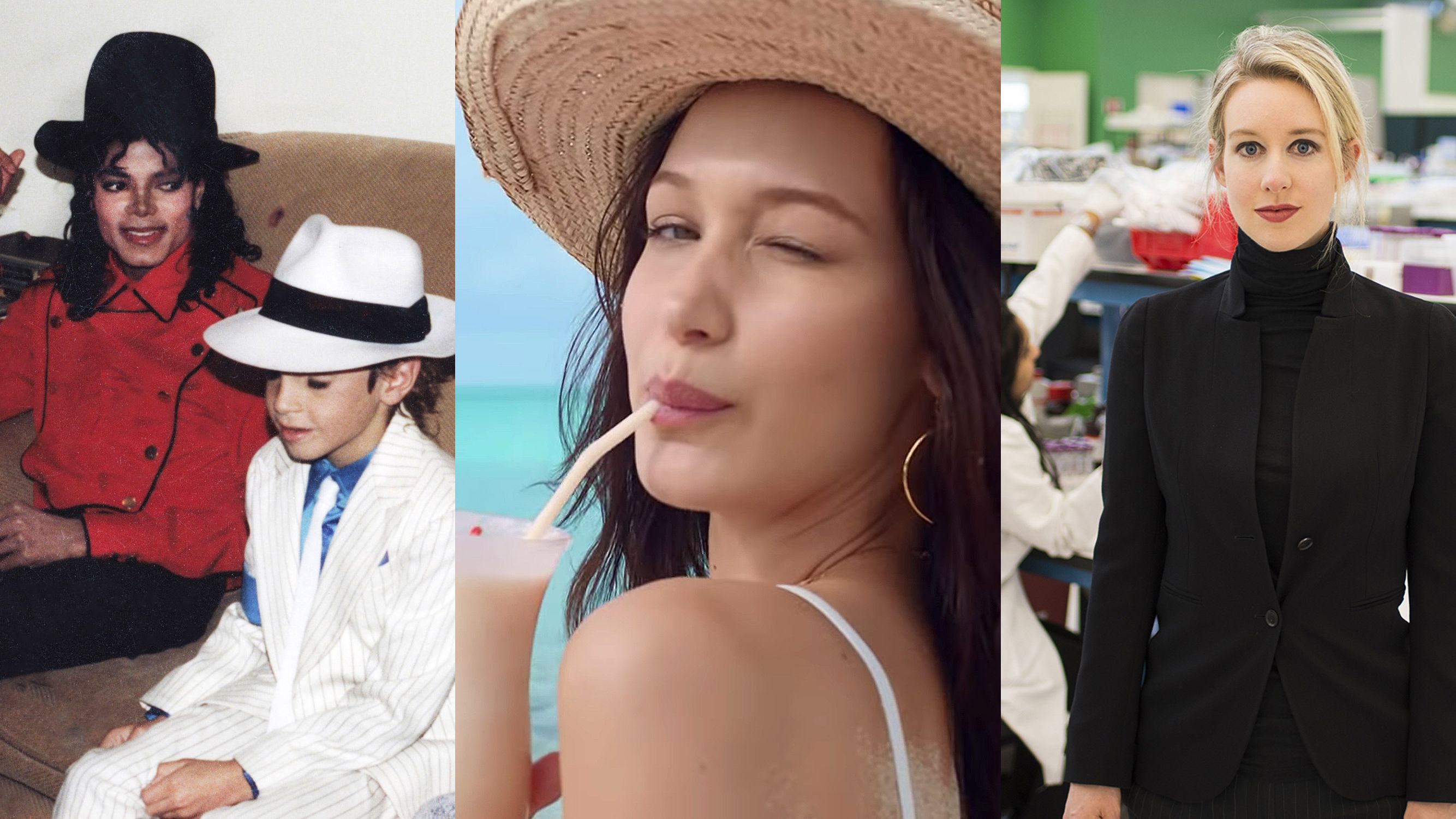Erin Lee Carr’s New Documentary Is a Harrowing Look at the USA Gymnastics Scandal
The 31-year-old director’s latest, At The Heart of Gold, premieres on HBO May 3.

Erin Lee Carr has an uncanny knack, as the director of several true crime documentaries, for finding hidden depth and nuance in tabloid cases. There was her 2017 documentary on the Gypsy Rose Blanchard case, Mommy Dead and Dearest, and Thought Crimes, the release of which helped overturn the conviction of Gilberto Valle, the so-called “cannibal cop.” Later this year, she’ll release a two-part documentary called I Love You, Now Die, about Michelle Carter, the teen convicted of involuntary manslaughter for texting her boyfriend to commit suicide.
But her latest documentary, At the Heart of Gold: Inside the USA Gymnastics Scandal, which premieres on HBO May 3, is new territory for her. Unlike her other films, the story told here—of the brave current and former gymnasts who came forward to accuse longtime USA Gymnastics doctor Larry Nassar of decades of sexual abuse—was well-known. Nassar’s story wasn’t tabloidy, it was plain horrifying, and his ultimate conviction last year felt like a crystallization of the larger #MeToo movement, of which this case proved a hallmark. What could Carr, 31, possibly find that we didn’t already know?
As it turns out, there’s a lot of under-explored territory around this scandal. Through one-on-one interviews with survivors—including some very young women, teens even in these taped conversations after-the-fact—Carr paints a picture not just of a predator who went uncaught, but of a system that allowed his predation to occur with little oversight. “We kind of call it a how-dunnit, not a whodunnit,” Carr tells Marie Claire. “We know who did it, but it’s, How did this happen?”
That’s not to say she shies from the monstrous portrait of Nassar, who’s almost disturbing to even look at in At The Heart of Gold. But the story isn't about him. Carr is able to expand the scope of what we know about this case to include the commodification of young women’s bodies in the name of Olympics glory, and how the do-whatever-it-takes mentality of elite sports could make space for an abuser to hide—two angles that received less attention than the many other aspects of this case.
But while the accounts of abuse are often hard to hear, this isn’t a film that leaves its viewers feeling utterly hopeless. In fact, the focus is on the strength of the women—156 survivors spoke during Nassar’s sentencing over seven days—and how coming forward helped other survivors of abuse. It feels almost triumphant by the end—how a monster was brought down just by women believing each other.
Carr talked to Marie Claire about how she got involved with this case, what it took to make the film, and how she takes care of herself after hard days.
On how she came to document this particular story
“The way the [production company and I] first started talking about it was about the parasitic relationship between athlete and coach, how something so healthy and amazing and an important role in an athlete’s life—their mentor and coach—was being perverted by bad actors. So I started looking into that, and I kept hearing Larry Nassar’s name. Then it was August 2017, when the actual accusations came forward, and we knew we had a story.”
Get exclusive access to fashion and beauty trends, hot-off-the-press celebrity news, and more.

Carr (center) with the Sister Survivors of USA Gymnastics at the film’s Tribeca premiere.
On why she took on such a powerful and well-publicized case
“I think that I wanted to grow. I’m a director that feels very comfortable—I really like working in true crime because there are embedded stakes. I think that most tough, smart women I know, they push themselves.
When it came to subject matter that I was not intimately familiar with, I wanted to try it. I really loved working on this movie and wanted to get involved because gymnastics is beautiful. You have a foundation of this incredible sport that you can put inside this movie to have these breaths, to sort of pause to watch Simone Biles take the stage at the Olympics. I’ve always been mesmerized by what these women can do, and to be able to study it and think about it was a really important opportunity.”
How she takes care of herself after hours of harrowing interviews
“At night, I cannot watch true crime—my therapist put the kibosh on true crime at night, because I work with it during the day—so it’s like this weird cyclical repeat of 30 Rock, Sex and the City, and Gilmore Girls. My ex-boyfriend was like, ‘Why? Why is Gilmore Girls always on?!’ [Laughs.] I looked into it and it’s because we’ve listened to it so many times that our brains think that [these characters] are our friends, and dopamine is released and you feel a genuine sense of ease and comfort. Thank you, Amy Sherman Palladino [creator of Gilmore Girls]. Thanks for making me feel safe.
For At the Heart of Gold, it was a forensic detailing of the abuse and police reports and investigation tapes and.... And my book [2019’s All That You Leave Behind] is about my father’s [journalist David Carr, who passed away in 2015] death, so it’s like, ‘Just kind of ease your brain up at night.’"

Carr in front of the Mommy Dead and Dearest poster.
“I really want to encourage and empower female filmmakers. I got into documentary because I saw that women were not often elevated to positions of power like director, like producer, like a writer. I think women—not to be gender-biased—but I think we’re natural listeners. I’m an empath, so when I sit down with you, I want to stare into your eyes and I want to listen to you.”
“I don’t want to be a stick in the mud about this, but I want to see women elevated through documentary. I think we’re at a perfect time where there’s so much space for television. I make films about women: When you think of Mommy Dead and Dearest, it’s Gypsy. This is not about Larry Nassar, it’s about the survivors. I’m making things about women, and that is not rare but it’s not commonplace. I think if we hire more [female] directors and writers, there will be more stories about all sorts of complicated women.”
For more stories like this, including celebrity news, beauty and fashion advice, savvy political commentary, and fascinating features, sign up for the Marie Claire newsletter.
RELATED STORY

Cady has been a writer and editor in Brooklyn for about 10 years. While her earlier career focused primarily on culture and music, her stories—both those she edited and those she wrote—over the last few years have tended to focus on environmentalism, reproductive rights, and feminist issues. She primarily contributes as a freelancer journalist on these subjects while pursuing her degrees. She held staff positions working in both print and online media, at Rolling Stone and Newsweek, and continued this work as a senior editor, first at Glamour until 2018, and then at Marie Claire magazine. She received her Master's in Environmental Conservation Education at New York University in 2021, and is now working toward her JF and Environmental Law Certificate at Elisabeth Haub School of Law in White Plains.
